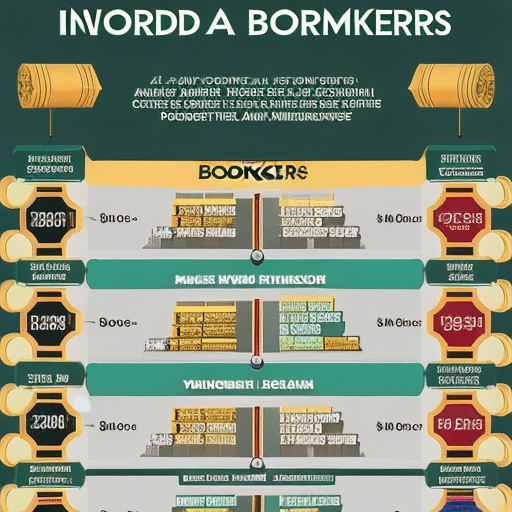Xrp Long-Term Growth Potential Compared
Investing in cryptocurrency can be a risky endeavor, like navigating a minefield. With so many options to choose from, it can be difficult to determine which investment is right for you. Among the various digital tokens out there, XRP stands out for its potential long-term growth and promising use cases. In this article, we’ll explore how XRP compares to other cryptocurrencies when it comes to long-term growth potential and provide insights into strategies that could make investing in XRP profitable.
Overview of XRP
You’ve likely heard of XRP, the third-largest cryptocurrency by market capitalization. It’s the digital asset created by Ripple Labs that could potentially revolutionize global payments. XRP was created to act as a bridge currency for different financial institutions, with the aim of providing liquidity solutions and reducing transaction costs using new ripple technology. What sets it apart from other cryptocurrencies is its ability to move money quickly across borders at a fraction of the cost compared to current methods. This makes XRP an attractive option for banks and other financial institutions looking for faster, cost-effective solutions when transferring funds internationally. With its fast settlement times and low fees, XRP has become increasingly popular in certain industries that rely on rapid cross-border transactions like banking and remittance services. However, its long-term growth potential is still largely unknown as regulators in many countries have yet to provide clear guidelines on how they will treat cryptocurrencies such as XRP in the future. As such, further market analysis is needed before making any definitive conclusions about its potential growth trajectory over time.
Market Analysis
Exploring the current market trends can provide insight into what’s ahead for cryptocurrencies. One of the most important aspects to consider when determining a cryptocurrency’s long-term growth potential is the regulatory environment it operates in. Regulatory clarity, or lack thereof, can have a large impact on liquidity concerns and overall investor confidence. Additionally, factors such as public sentiment, trading volume, and competition all play an important role in XRP’s future prospects.
The overall adoption and use case of XRP is another factor that must be considered when analyzing its long-term growth potential. As more people become aware of XRP’s features and capabilities, there will likely be increased demand for the asset which could result in further appreciation of its value. It will be interesting to see how this plays out over time as advancement in technology continues to shape the financial landscape. In conclusion, exploring these various aspects provides invaluable information about what lies ahead for XRP’s future prospects. Moving forward, it is essential to examine XRP adoption and use cases to get a better sense of its long-term growth potential.
XRP Adoption and Use Cases
Gaining an understanding of XRP adoption and use cases is key to predicting its future success, so let’s dive in! Currently, Ripple has multiple high-profile partnerships with banks and payment processing companies from around the world. These companies are using XRP to facilitate payments between different countries and currencies quickly, efficiently, and securely. This is very beneficial for both businesses as well as customers who need to transfer funds between different countries or currencies.
The below table highlights some of the most prominent partnerships and provides a brief description of how each one uses XRP:
| Partner | Use Case |
|---|---|
| American Express | Payment processing across borders |
| Santander | Cross border payments within Europe |
| MoneyGram | Money transfers across borders |
| Western Union | International money transfers |
| Japan Bank Consortium | Payments & settlements within Japan |
Through these partnerships with financial institutions, Ripple continues to increase adoption of their technologies while driving innovation in the financial services industry. This will be essential for long-term growth potential when it comes to XRP.
Long-term Growth Potential
By assessing Ripple’s partnerships and the applications of XRP, you can gain insight into its long-term prospects for success. There are a number of regulatory implications that must be taken into account when considering the use cases of XRP, as well as how it will fare in comparison to other cryptocurrencies. A utility analysis can shed light on how Ripple is positioning itself for long-term growth potential by taking advantage of its current infrastructure. The ability to facilitate real-time payments with low transaction fees, coupled with increasing adoption from major financial institutions, suggests that XRP has value beyond speculation. As such, it stands out from many other digital assets and could potentially have a strong future as more businesses utilize blockchain technology for their operations. With this in mind, let us now turn our attention to the comparison between XRP and other cryptocurrencies.
Comparison to Other Cryptocurrencies
Considering how XRP measures up to other cryptocurrencies can help you get a better understanding of its potential. Token economics is important when considering the long-term growth potential of any cryptocurrency, and XRP has one of the most successful token economies in the crypto landscape. It has been designed to be used as an efficient digital asset for payments; it is relatively inflation-proof due to its fixed supply, and transactions are fast and inexpensive due to its scalable blockchain infrastructure. Compared with other popular cryptocurrencies such as Bitcoin or Ethereum, XRP offers lower transaction fees and faster settlement times without sacrificing security or decentralization. Additionally, it does not face scalability issues like some other major coins since it can process around 1500 transactions per second. While no cryptocurrency is guaranteed to have long-term success, comparing XRP’s features with those of competitors provides insight into why investors might see it as a smart option for their portfolios. This leads us into our next section about XRP investment strategies.
XRP Investment Strategies
Investing in XRP can be a great way to increase your portfolio’s financial success; for example, it is designed to process transactions quickly and cheaply, making it an ideal asset for payments. Ripple trends have proven to be consistently strong, and the liquidity mining strategies pioneered by the company have made XRP a popular asset with investors who want to diversify their portfolios or look for more sophisticated investment opportunities.
One of the most successful strategies when investing in XRP is to track industry news closely. This will help you stay up-to-date on current events that could affect the price of XRP, such as upcoming releases or new partnerships. Additionally, monitoring other cryptocurrency prices can provide valuable insights into how different assets may interact with each other over time, allowing you to make better decisions about when and where to buy or sell XRP. Finally, keeping an eye on blockchain developments and emerging technologies related to Ripple can give you an edge in predicting future trends in this exciting sector of the market.
Frequently Asked Questions
How much money will I make if I invest in XRP?
It’s impossible to predict how much money you’d make investing in XRP. Ripple mining is risky and regulatory risks are ever-present. Do your research and weigh the potential pros & cons before deciding if an investment in XRP is right for you.
What is the transaction speed of XRP?
You can expect transactions to be completed in a matter of seconds with XRP – its interoperability and scalability make it one of the fastest cryptocurrencies. On average, 5-7 transactions per second can be processed, making it an ideal choice for financial institutions.
What are the benefits of using XRP over other cryptocurrencies?
You can benefit from the liquidity and scalability advantages of XRP over other cryptocurrencies. It has faster transaction speeds, lower fees, and is more reliable than many alternatives.
What is the current market price of XRP?
The current market price of XRP is determined by the supply and demand forces. Outlook for the near future suggests that prices may fluctuate, but overall remain steady.
What are the risks associated with investing in XRP?
Investing in XRP carries volatility risk and potential price manipulation. It’s important to understand these risks before making decisions on investing.





 Bitcoin
Bitcoin  Ethereum
Ethereum  Tether
Tether  XRP
XRP  Solana
Solana  USDC
USDC  TRON
TRON  Dogecoin
Dogecoin  Lido Staked Ether
Lido Staked Ether  Cardano
Cardano  Wrapped Bitcoin
Wrapped Bitcoin  Hyperliquid
Hyperliquid  Wrapped stETH
Wrapped stETH  Sui
Sui  Bitcoin Cash
Bitcoin Cash  Chainlink
Chainlink  LEO Token
LEO Token  Stellar
Stellar  Avalanche
Avalanche  USDS
USDS  Wrapped eETH
Wrapped eETH  Shiba Inu
Shiba Inu  Toncoin
Toncoin  Hedera
Hedera  WETH
WETH  Litecoin
Litecoin  WhiteBIT Coin
WhiteBIT Coin  Binance Bridged USDT (BNB Smart Chain)
Binance Bridged USDT (BNB Smart Chain)  Monero
Monero  Coinbase Wrapped BTC
Coinbase Wrapped BTC  Ethena USDe
Ethena USDe  Polkadot
Polkadot  Bitget Token
Bitget Token  Uniswap
Uniswap  Aave
Aave  Pepe
Pepe  Dai
Dai  Pi Network
Pi Network  Ethena Staked USDe
Ethena Staked USDe  Bittensor
Bittensor  Cronos
Cronos  Aptos
Aptos  OKB
OKB  BlackRock USD Institutional Digital Liquidity Fund
BlackRock USD Institutional Digital Liquidity Fund  NEAR Protocol
NEAR Protocol  Jito Staked SOL
Jito Staked SOL  Internet Computer
Internet Computer  Ethereum Classic
Ethereum Classic  Ondo
Ondo